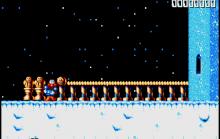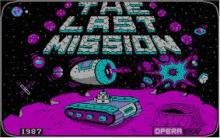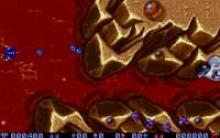The Evolution of Mortal Kombat: A Journey Through the Classic Games

Introduction
The Mortal Kombat series has been a cornerstone of the fighting game genre since its debut in the early 1990s. Known for its brutal combat, unique characters, and iconic Fatalities, Mortal Kombat has left an indelible mark on gaming history. This article delves into the evolution of Mortal Kombat through its classic games, from the original release to its various sequels and special editions.
Mortal Kombat: The Birth of a Legend
Released in 1992, Mortal Kombat introduced players to a new level of fighting game intensity. With its distinctive digitized graphics and over-the-top violence, Mortal Kombat quickly became a cultural phenomenon. The game's roster featured memorable characters like Scorpion, Sub-Zero, and Raiden, each with their own unique moves and Fatalities.
Mortal Kombat II: Enhanced Combat
In 1993, Mortal Kombat II (also known as MK2) took the series to new heights. The sequel improved upon the original with better graphics, more fluid gameplay, and a larger roster of fighters. It also introduced new Fatalities, Babalities, and Friendships, adding depth and variety to the combat experience.
Mortal Kombat 3: Expanding the Universe
Mortal Kombat 3 debuted in 1995, expanding the Mortal Kombat universe with new characters, stages, and game mechanics. The introduction of the "Run" button and chain combos added a new layer of strategy to the fights. Mortal Kombat 3 also featured a more detailed storyline, weaving a complex narrative around the tournament.
Mortal Kombat Trilogy: The Ultimate Collection
Mortal Kombat Trilogy, released in 1996, is a comprehensive collection that includes characters and stages from the first three games. This ultimate edition allows fans to experience the entire Mortal Kombat saga in one package, offering endless hours of fighting action and nostalgia.
Mortal Kombat Demos: Sneak Peeks into the Action
The Mortal Kombat II Demo and Mortal Kombat 3 Demo provided players with early glimpses into the full games. These demos showcased the enhanced graphics, new moves, and expanded rosters that fans could look forward to in the final releases. They played a crucial role in building anticipation and excitement for the upcoming games.
Mortal Kombat on Genesis and SMS: Console Versions
Mortal Kombat's success on arcade machines led to its adaptation on various home consoles, including the Sega Genesis and Sega Master System (SMS). The Genesis version of Mortal Kombat and its sequels, Mortal Kombat II and Mortal Kombat 3, brought the brutal action to home players. Similarly, the SMS versions of Mortal Kombat, Mortal Kombat II, and Mortal Kombat 3 allowed players to enjoy the series on a different platform.
Conclusion
The Mortal Kombat series has evolved significantly since its inception, continually pushing the boundaries of the fighting game genre. From its groundbreaking debut to its expansive sequels and special editions, Mortal Kombat remains a beloved and influential franchise. Whether you are a long-time fan or new to the series, exploring these classic games offers a fascinating look at the origins and evolution of one of gaming's most iconic titles.










